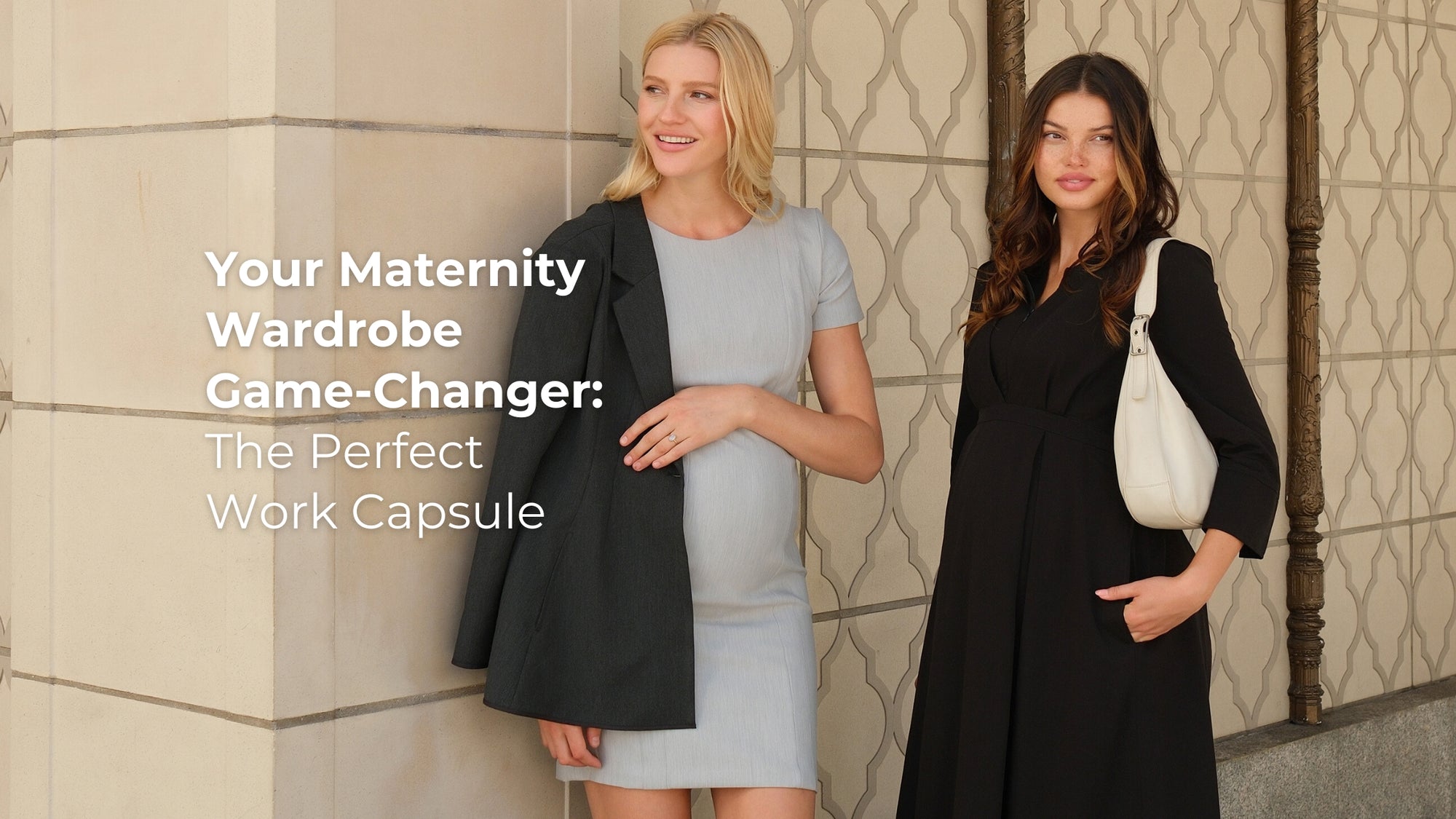by Joy O'Renick
October 24, 2022
We’ve all seen the advice on pregnancy blogs and Pinterest posts: “Don’t waste money on expensive clothes you won’t wear again - go cheap with your maternity wardrobe.” It’s easy to understand the impulse to shop conservatively on what is often viewed as “temporary” fashion, but the argument to buy budget maternity clothes misses the mark for several reasons. If we examine the purpose and lifespan of most fashion purchases, it becomes clear that a quality maternity piece is just as strong an investment as nearly anything else in our closets.
Feeling Terrible, Looking Great
Of course we buy clothes because we have to wear them. More importantly, we buy clothes because we want to look great. For many women, our relationships with our bodies get especially tricky during pregnancy. It’s hard to feel that we look our best because we often don’t feel our best, and our entire bodies are undergoing constant, radical changes. Pregnancy is the time when it’s most important for us to feel flattered in our clothes. Realistically, cheap, sloppily cut garments are never very flattering, and buying them just isn’t a good use of money, no matter how low their price tag (or how deceptively beautiful that $12 dress looks online). Instead, expecting mamas are better off investing in items we know compliment all bodies. I mean, don’t we live in about 16 different versions of our own bodies from two-pink-lines-on-the-stick to Baby’s first steps?


MARION Sarah Empire Maternity & Nursing Dress
Flattering Design Elements to Look For
- Structured designs (think blazers, tailored styles, artfully-placed pleats).
- Luxurious fabrics thick enough to cover a little bloating.
- Quality construction that won’t sag or lose its shape in a couple of washes.
Is Maternity Fashion Really “Temporary”?
The term “maternity fashion” encompasses not only pregnancy, but also nursing/breastfeeding, and recovery. Depending on our bodies, how long we choose to nurse, and how difficult our physical recoveries are, women may need “maternity” clothes for a couple of years each time we give birth. Since the average mother in the US still bears more than one child, maternity and nursing garments are likely to live in our closets for a substantial span of time. Surprisingly, a maternity wardrobe that is of exceptional quality, timeless rather than trendy, and designed with invisible nursing access can turn out to be a longer-term investment than your average cashmere sweater.
MARION Boardroom Maternity & Nursing Dress
Design for Maternity and Mama
It’s an exciting time in pregnancy fashion because “obviously maternity” clothes are on the way out (thank goodness!). Mamas-to-be have rightfully begun to demand maternity clothes that are actually stylish instead of unattractively functional, and the industry is answering. Sustainability is also on the minds of many expecting parents, which has spurred efforts toward longer-use maternity design. The dual push for style and sustainability has led more and more maternity brands to focus on garments that look good whether a woman is pregnant or not. Empire waists, stretchy fabric that can expand and shrink on command, and under-belly pants with adjustable elastic have all arrived to answer the call. You’ve probably heard this style referred to as “pregnancy, nursing, and beyond” by dozens of maternity brands. MARION has dubbed it Maternity & Mama. Accouchee calls it simply, “mom clothes.”


MARION Louie Knit Maternity & Mama Dress
The Afterlife of Your Maternity Closet
Some new mamas are drawn to the ritual of clearing maternity clothes from our closets to mark the end of childbearing, no matter how beautifully designed our pregnancy garments may be. By the end of postpartum recovery, cheap maternity clothes are often so worn out from use that they are good for little more than the garment recycling bin. However, high-end and luxury maternity clothes reliability fetch handsome prices on fashion resale sites. 140 million women get pregnant every year, and there are lots of bargain hunters among them willing to give you back some of your maternity investment. These sites are favorites for good reason:
- Poshmark: It’s free to list your items, and you receive a free prepaid shipping label. When your items sell, you’ll pay either 20% commission for listing prices over $15, or $2.95 for items under $15.
- thredUP: If you don't have time to list items yourself, thredUP is a fantastic option. When you order a Clean Out Kit, you can choose to donate your clothing or get cash or credit. ThredUp typically takes about 40% of the items, and they’ll recycle the rest or return them to you for $10.99. If something sells, you get 5%–90% of the list price.
- The RealReal: here you can consign luxury brands by mailing or dropping off your items or by having them picked up (depending on your location). The RealReal’s staff prices and lists your things, and you earn up to 85% of the sale price.
If you’re not worried about making money with your used maternity pieces, consider donating them to an organization like Dress for Success, which works to empower women across the globe by providing them with (among other things) free professional attire, or your local women’s shelter that provides much-needed clothing to women fleeing violent relationships.
Women are doing the hardest, most powerful work possible during pregnancy, nursing, and early motherhood. We spend so much of our energy taking care of our bodies in service to our babies that we often forget to care for ourselves. A quality maternity wardrobe is not just a smart investment, it is truly an act of self care in a time when we need and deserve it most.




